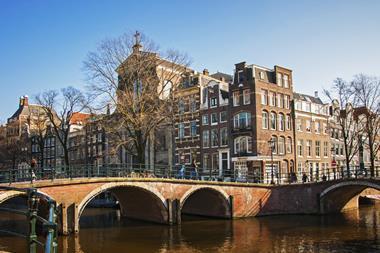The €6.3bn pension fund of insurance provider UWV has raised its risk profile by increasing exposure to private equity and infrastructure.
According to its 2015 annual report, it also plans to increase real estate investments and holdings in commercial and residential mortgages at the expense of its euro-denominated government bond and equity allocations.
The scheme said it had decided, based partly on a survey into the risk appetite of its participants, to allocate 10% of its portfolio to risk-bearing investments, adding that it had already reduced its strategic interest hedge from 60% to 50%.
It estimates its policy change will increase its surplus return by 0.7 percentage points to 2.2%.
The UWV scheme aims to raise the combined private equity and infrastructure allocation to 5%, with the help of asset manager Partners Group.
Its property and mortgages portfolios are to account for 10% and 6% of overall assets, respectively.
The scheme has placed the four asset classes in a separate portfolio that holds illiquid investments – next to its regular matching and return portfolios – specifically meant for generating returns for indexation.
The Pensioenfonds UWV said it also wanted to focus on cost-saving via passive investment, pointing out that its developed-market equity, government bond, inflation-linked bond and commodities holdings were already under passive management.
It said it would update its contracts with pensions provider TKP Pensioen and fiduciary asset manager Allianz Global Investors this year.
Last year, it replaced Morgan Stanley as its active manager for local-currency emerging market debt (EMD) with Legal & General, which now manages the investments passively.
It said it would review Aberdeen AM as active manager of its hard-currency EMD holdings after the manager underperformed last year by 4.1 percentage points.
The UWV scheme posted a net return of -0.6% due largely to a 3.3% loss on its matching portfolio, as well as negative results on its interest and currency hedges.
It said its strategy shift also reduced its return by 0.5 percentage points.
The pension paid €152 per participant for pensions administration and spent 0.38% and 0.17% on asset management and transactions, respectively.
Its funding stood at 95.7% as at the end of June.












No comments yet